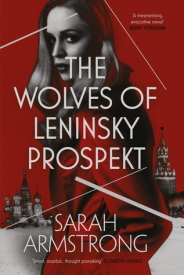Why would anyone pack a brick in their carry-on?
In chapter one of The Hunted Girls, my forensic psychologist deplanes with her carry-on made heavier by the brick tucked inside. Forensic psychologist Nadine Finch earned this odd item by completing a very special challenge at the FBI National Academy. This isn’t just a brick, covered in yellow paint, its precious cargo presented only to trainees who complete a unique fitness challenge.
Have you heard of the Yellow Brick Road?
I’m not referring to the one from the movie, but the one in Quantico, Virginia. After completion of their FBI training at the national academy, each graduating class gathers at the start of the grueling 6.1-mile obstacle course, fondly referred to as the Yellow Brick Road. This is a brutal course, attempting it is optional, and completion is a mark of honor. Since this is a virtual race, you can run, jog (or walk) from any location you chose.
Why is the course called The Yellow Brick Road?
Initially, US Marines built the obstacle course in a hilly forested area on the grounds of the training facility. The yellow bricks served a practical purpose. The bright color helped marked the trail and kept runners from veering off course in the dark, muddy and sometimes gloomy woodland trail. Inadvertently, these bricks gave the famously tough course its moniker. The Yellow Brick Road was born.
Sometime later, a yellow brick became the trophy that marked its completion. This is not a fancy gold-colored brick or a representation of a brick. It is an actual brick, painted bright yellow and presented to each graduate who completes the run. Written in black, on the surface of the repurposed building block, are the words YELLOW BRICK ROAD FBINA and the graduating class number. For example:
YELLOW BRICK ROAD FBINA 261
What exactly is on that obstacle course?
There are YouTube videos showing the event. This strenuous run crisscrosses over uneven ground. Runners climb large rocks, scramble up steep inclines and down daunting declines. Along the way runners scale climbing walls, ascend rock faces, clamber over cargo nets, dash through streams and crawl under barbed wire.
Want to try your own YBR?
This year there is a virtual run sponsored by the FBIAA Charitable Foundation. This gives all of us a chance to get out and get moving. You can register at FBINAA.org. The fundraiser helps support law enforcement professionals. Just complete the challenge anytime between April 1 and July 18, 2021. The entrance fee is $50 and includes a T-shirt, bib and race metal. Not a runner? Support this charity by buying merch.
Nadine and her yellow brick.
So you see why my protagonist, Nadine Finch, having completed the Yellow Brick Road, returns home with her prize in her carry-on because this article is too precious to check. She is eager to show this mark of her achievement to her partner, Homicide Detective Clint Demko and her friends, but upon arrival, she receives her first assignment and must leave before unpacking. Throughout the story, Nadine is so busy with the investigation, she never has a chance to unpack her roller bag or to show her friends her precious yellow brick. Instead, she moves several times, dragging the suitcase containing the brick around with her. Having Nadine lug this brick from place to place just tickled me. That yellow brick serves as a running gag for me and the reader and toting it about acts as an obstacle course of its own, so that when she finally unpacks that brick, we all breathe a sigh of relief.
I suppose anyone strong enough to complete the Yellow Brick Road would find transporting a brick in a roller bag to be no challenge at all!
The Hunted Girls by Jenna Kernan (Published by Bookouture) Out Now
Stumbling through the pitch-black forest, twigs scratching her bare feet, she sobs as she imagines her children crying for their mommy to put them to bed. By now everyone will know she is missing. Please, please let me find the way home. Before he comes back. As Agent Nadine Finch rushes to investigate the murder of newlywed Nikki Darnell in Ocala National Forest, Florida, fear floods her body. She swore she’d never set foot here again, not since the case fifteen years ago which tore her life apart. But taking in the triangular cuts scarring Nikki’s perfect pale skin, she knows she must put her own traumatic past aside to find justice for Nikki’s inconsolable husband. Discovering water in Nikki’s lungs, and certain the triangular wounds were made by arrowheads, Nadine must convince her team of her terrifying theory: that Nikki was hunted down and drowned before being left for them to find. But what monster would do such a thing? And why? Then another woman, a mother of two, is discovered in the woods, tell-tale arrow marks all over her body. Recognizing the victim as a local waitress, Nadine fears the killer has started attacking women known to her. And the moment she traces the arrow heads to a nearby outdoors store, her own partner disappears. Frantic, Nadine follows the trail to a lonely cabin deep in the Florida wetlands where she finally learns the heart-stopping truth. To save one of her own, she must confront a deadly hunter obsessed with the case that’s haunted her whole career. Will Nadine have to make the ultimate sacrifice to stop him taking more innocent lives?
More information about Jenna Kernan and her books can be found on her website. You can also follow her on Twitter @JennaKernan






























